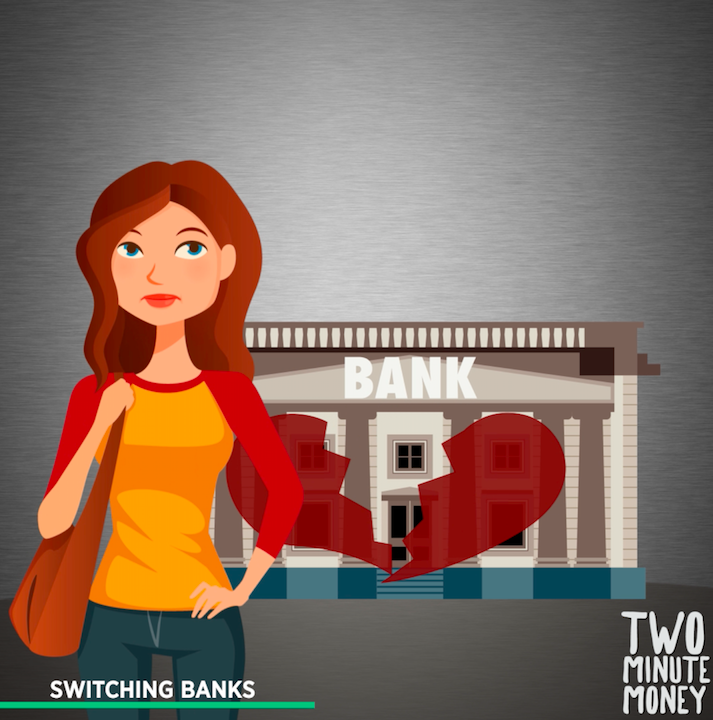Two Minute Money: Switching banks
Welcome to Two Minute Money, Yahoo Finance’s new personal finance series offering quick explanations for some of the most important questions involving your money.
Have you been thinking about breaking up with your bank? Maybe it charges too many fees or you want one that’s closer to your apartment or office. Or maybe you don’t like its customer service or its wonky mobile app.
Yet, for all the reasons there are to switch banks, there’s one reason most people don’t follow through—it seems like it’ll be a huge pain.
Don’t worry. Just follow these simple steps. Breaking up isn’t always hard to do.

What do you want?
Start by figuring out what you’re looking for in your new bank. What are your goals for a new account? Make a list. Then try to find a bank that matches all or most of those goals. Do research, talk to friends and read reviews.
Once you’ve found a bank that fits your needs, call your current bank and give it a chance to lower its fees to match the terms the new bank offers. If it can’t match those of your new bank, it’s time to take the leap. But don’t close your old account just yet …
Check to see if your new bank has a switch kit—checklists and forms that can streamline the process of moving to a new bank. Most banks do.
Make the switch
The first thing you’ll want to do is move some money to your new account. Start with your paychecks. Talk to your HR department to switch your direct deposit. You’ll also want to be careful if you have other sources of income, like investments that issue dividends, which can be switched over to your new bank.
Make sure you don’t have any outstanding checks. If you do, leave enough money in your old account to cover them and any possible maintenance fees.
Now that you’ve got some cash in your new account, get your new debit card and checkbook. So far, so good, right?
Next, shift your automatic payments for bills for credit cards or car payments, and move any recurring transfers you have.
You did it!
Now you can use your new bank like normal, but keep an eye on your old account.
Once it looks like everything has moved over and there are no more pending charges, close your old account and transfer the rest of your money to your new bank.
That’s it! Not too bad, right? Three out of five people who have never switched banks think it will be hard. But now you know how easy it can be.


